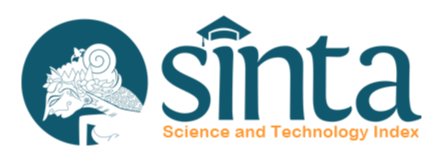Intervention in the Effort of Decreasing Anemia Incidence to Students of SMA N 4 Cikupa Kabupaten Tangerang
DOI:
https://doi.org/10.12928/dpphj.v15i1.2249Keywords:
anemia, adolescent girls, health promotionAbstract
Background: A survey conducted by the World Health Organization (WHO) in the span of time between 1993 and 2005 found that 1.62 billion people in the world had anemia, or around 24.8% of the world's population, with 30.2% (468 million) reproductive aged women. The research is a descriptive study as a means to perform early detection of anemia in adolescent girls with interventions in the form of counseling, improve adolescent knowledge, and improve adolescent attitudes and behavior at High School or Sekolah Menengah Atas Negeri (SMA N) 4 Cikupa. Method: This research is a descriptive quantitative analytic study where the sample was selected by simple random sampling. The population in this study were students of 4 Cikupa, Tangerang Regency of SMA N 4, Cikupa, Tangerang Regency. Results: The results of the study were (97.72%) respondents had increased their knowledge after counseling and (72.72%) respondents had improved their behavior and attitudes toward anemia. Participants (25%) were diagnosed with anemia and (75%) did not have anemia. Conclusion: improved knowledge is an important factor in reducing the prevalence of anemia in adolescent girls.
References
2. DeLoughery TG. Iron Deficiency Anemia. Medical Clinics of North America. 2017;101(2):319-332.
3. Camaschella C. Iron-deficiency anemia. New England Journal of Medicine. 2015; 372:1832-1843.
4. Gebreegziabiher G, Etana B, Niggusie D. Determinants of Anemia among Children Aged 6-59 Months Living in Kilte Awulaelo Woreda, Northern Ethiopia. Anemia. 2014:1-9.
5. McLean E, Cogswell M, Egli I, Wojdyla D, De Benoist B. Worldwide prevalence of anemia, WHO Vitamin and Mineral Nutrition Information System, 1993-2005. Public Health Nutr. 2010.
6. World Health Organization. The global prevalence of anaemia in 2011. WHO. 2015.
7. Kementerian Kesehatan RI Badan Penelitian dan Pengembangan. Laporan Riset Kesehatan Dasar Nasional (RISKESDAS) 2013. Kementrian Kesehat Republik Indones. 2013.
8. Kementerian Kesehatan RI Badan Penelitian dan Pengembangan. Laporan Riset Kesehatan Dasar Nasional (RISKESDAS) 2018. Kementrian Kesehat Republik Indones. 2018
9. Dinkes Provinsi Banten. Profil Kesehatan Provinsi Banten Tahun 2018. Dinas Kesehatan Provinsi Banten. 2018.
10. Fajriyah N, Fitriyanto M. Gambaran Tingkat Pengetahuan tentang Anemia pada Remaja Putri. J Ilm Kesehat. 2016;9(1).
11. Suryani D, Hafiani R, Junita R. Analisis Pola Makan dan Anemia Gizi Besi pada Remaja Putri Kota Bengkulu. J Kesehat Masy Andalas. 2017;10(1):11-18.
12. Martini. Faktor - Faktor yang Berhubungan dengan Kejadian Anemia pada Remaja Putri di MAN 1 Metro. J Kesehat Metro Sai Wawai. 2015;8(1):1-7.
13. Harahap NR. Faktor- Faktor yang Berhubungan dengan Kejadian Anemia pada Remaja Putri. Nurs Arts. 2018;12(2):78-90.
14. Amir N, Djokosujono K. Faktor-Faktor yang Berhubungan dengan Konsumsi Tablet Tambah Darah (TTD) pada Remaja Putri di Indonesia : Literatur Review. Kedokt Dan Kesehat 2019;15(2):119-129.
15. Listiana A. Analisis Faktor-Faktor yang Berhubungan dengan Kejadian Anemia Gizi Besi pada Remaja Putri di SMKN 1 Terbanggi Besar Lampung Tengah. J Kesehat. 2016;7(3):455-469.
16. Mularsih S. Hubungan Pengetahuan Remaja Putri Tentang Anemia dengan Perilaku Pencegahan Anemia Pada Saat Menstruasi di SMK Nusa Bhakti Kota Semarang. J Kebidanan 2017;6(2):80-85.
17. Kalsum U, Halim R. Kebiasaan Sarapan Pagi Berhubungan dengan Kejadian Anemia pada Remaja di SMA Negeri 8 Muaro Jambi. J Penelit Univ Jambi Seri Sains. 2016;7(1):233-238.
18. Angrainy R, Fitri L, Wulandari V. Pengetahuan Remaja Putri Tentang Konsumsi Tablet FE pada Saat Menstruasi Pengan Anemia. J Endur. 2019;4(2):343-349.
19. Rohim AN, Zulaekah S, Kusumawati Y. Perbedaan Pengetahuan Anemia pada Remaja Putri Setelah Diberi Pendidikan dengan Metode Ceramah Tanpa Media dan Ceramah Dengan Media Buku Cerita. J Kesehat. 2017;1(2):60-71.
20. Jatmika Septi Ema Dwi, Muchsin Maulana KSM. Buku Ajar Pengembangan Media Promosi Kesehatan. Yogkarta: K-Media Yogyakarta; 2019.
21. Lubis DR, Putri AD, Binawan U. Peran Media Promosi Kesehatan terhadap Minat Wanita Usia Subur (WUS) untuk Melakukan Deteksi Dini CA Servik dengan Pemeriksaan IVA Test. Pros Semin Nas Stikes Syedza Saintika. 2021;1(1):568-576.
22. Siti Masfiah, Elviera Gamelia, Arrum Firda A.M AP. Efektifitas Pelatihan Media Audio-Visual Terkait Anemia Ibu Hamil dalam Peningkatan Kompetensi; The Effectiveness of Media Training for Making Animated Films about Pregnant Suffers Anemia to Improve The Knowledge and Skills of Health Promoter in Banyumas. J Kesmas Indones. 2017;9(1):12–22.
Downloads
Published
Issue
Section
License
Authors transfer the copyright and grant the Disease Prevention and Public Health Journal right of first publication with the work simultaneously licensed under a Creative Commons Attribution License (CC BY-SA 4.0) that allows others to share (copy and redistribute the material in any medium or format) and adapt (remix, transform, and build upon the material) the work for any purpose, even commercially with an acknowledgement of the work's authorship and initial publication in Disease Prevention and Public Health Journal. Authors are able to enter into separate, additional contractual arrangements for the non-exclusive distribution of the journal's published version of the work (e.g., post it to an institutional repository or publish it in a book), with an acknowledgement of its initial publication in Disease Prevention and Public Health Journal. Authors are permitted and encouraged to post their work online (e.g., in institutional repositories or on their website) prior to and during the submission process, as it can lead to productive exchanges, as well as earlier and greater citation of published work (See The Effect of Open Access).

This work is licensed under a Creative Commons Attribution-ShareAlike 4.0 International License.







